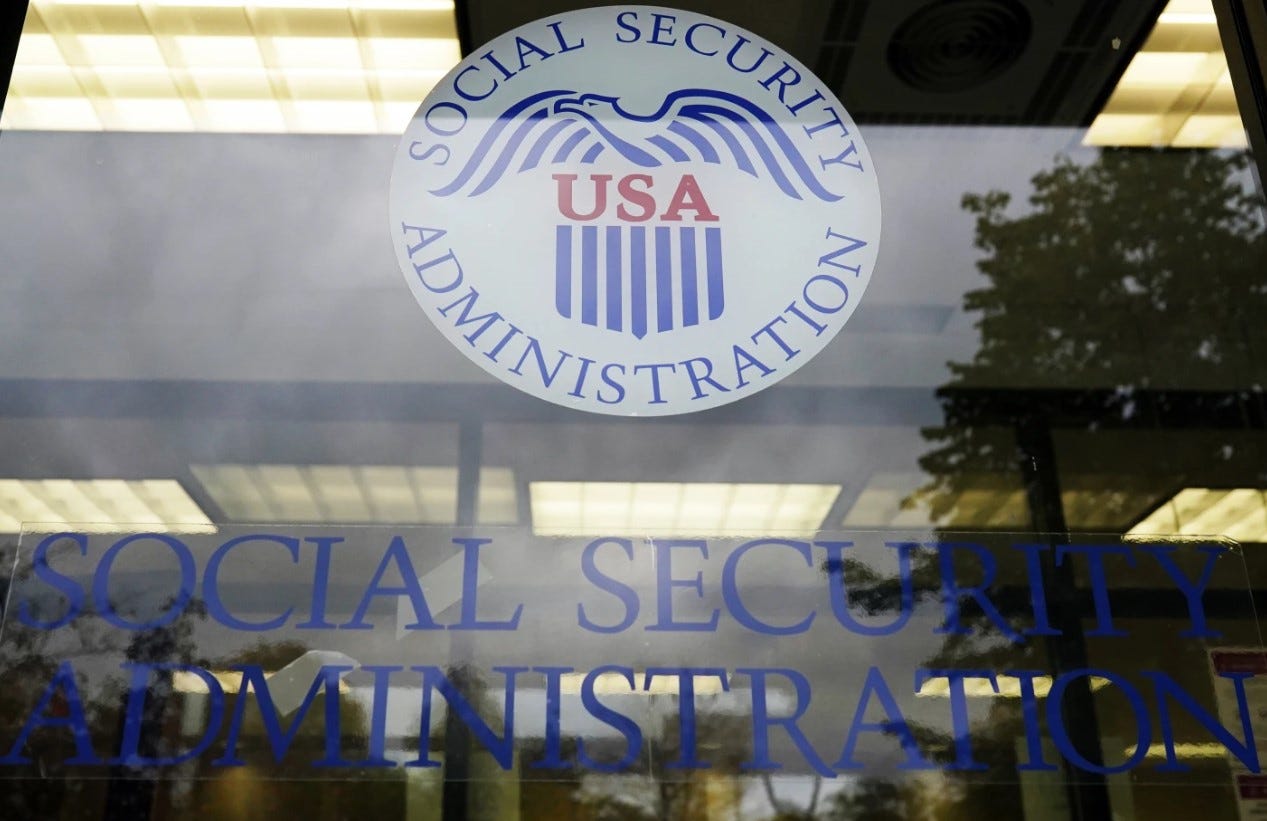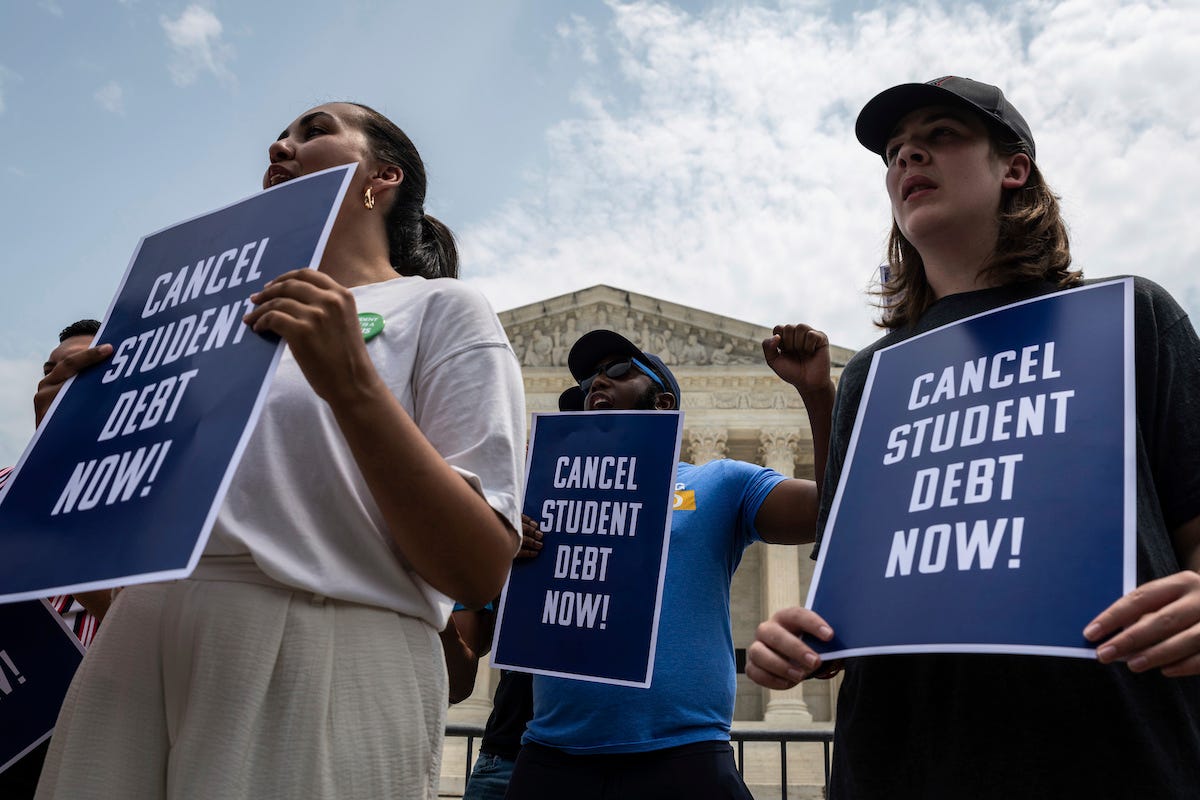Some Call It Bold. Others Call It Devastating.
Deep cuts to Medicaid, a military parade, and tax cuts -- here's what's inside the new budget proposal.
Note: This article was updated at 11amET on May 19.
What’s on the menu in the new federal budget proposal? A different version of America. Backed by Trump and most members of the GOP, the plan calls for deep cuts to safety net programs that help low income Americans, like Medicaid, food stamps, and student aid.
And it puts tax cuts, ICE detention facilities, a version of the Iron Dome, and a military parade at the top of the list. Supporters say it’s about promoting work, protecting the country, and growing the economy. Critics argue it will hurt the most vulnerable while giving more breaks to the wealthy, all while increasing the budget deficit.
And some Republicans are defecting.
Let’s take a look at the details.
1. Extending Trump’s 2017 tax cuts, adding new ones
The budget proposes making the tax cuts first enacted under the 2017 Tax Cuts and Jobs Act permanent. The individual tax cuts are set to sunset at the end of 2025, and without a bill that extends them, tax rates will return to where they were previously. (Contrary to popular belief, your federal tax rate did not go up under Biden; the US has been under this tax plan since before Biden was in office, so this does not necessarily mean you will see a reduction in your taxes.) This new proposal would preserve those rates indefinitely, but the biggest benefits would go to the wealthiest earners, mirroring the original law’s structure.
The budget proposal also introduces new tax breaks, such as temporary exemptions for tips and overtime pay (a pair of Trump campaign promises), available to earners below a certain threshold, and only to people with Social Security numbers.
The bill also increases the standard deduction — the portion of income that people can exempt from taxes without itemizing. For married couples filing jointly, the deduction would rise to $32,000 from $30,000; for single filers, to $16,000 from $15,000. Seniors over age 65 would get an extra $4,000 added to their deduction if they make less than $75,000 a year, or $150,000 for married couples filing jointly. These provisions would remain in effect for four years.
Altogether, the budget’s tax changes are projected to reduce federal revenue by approximately $4.5 trillion over the next decade.
In order to offset that $4.5 trillion reduction in revenue, the plan calls for major cuts in spending.
2. Making the safety net smaller
As part of the budgeting process, each committee was given a target number they needed to hit, and then they proposed a budget that fit within the target. In some cases, there is absolutely no way to achieve the target without major cuts to programs like Medicaid, which is taking a $715 billion hit. The budget would give states a fixed amount of money for Medicaid instead of the current open-ended federal funding.
It would also add work requirements for most adults ages 19 to 64 starting in 2029, but conservatives are pushing for the requirements to start “as soon as possible.” Those details are still being worked out. To keep their health coverage, these adults would have to work, look for a job, or take part in job training for at least 20 hours a week. People with disabilities, seniors, pregnant women, and full time caregivers would be exempt.
These changes could exclude at least 7.7 million people from the program by 2034, according to the Congressional Budget Office (CBO). Those affected would include low-income families, children, seniors, and people with disabilities.
In addition to cutting Medicaid, the proposal ends tax credits that help low and moderate income people buy insurance under the Affordable Care Act (ACA). This is estimated to make coverage unaffordable for 4.2 million people, according to the CBO.
The budget includes $600 billion in cuts to the Children’s Health Insurance Program, or CHIP, a program that pays for medical visits and prescriptions for low income children. Another safety net program, the Supplemental Nutrition Assistance Program (SNAP), would also see dramatic changes. The federal government currently covers all benefits and about half of the administrative costs of SNAP. The new proposal shifts more of the financial burden to the states, which will leave states with a choice: cut benefits, or raise taxes to pay for them.
3. Spending more on defense and border security
Under the GOP proposal, the defense budget climbs by 13%, to more than $1 trillion — including $25 billion for Trump’s proposed “Golden Dome” missile shield to protect the continental US. Also included in the total is up to $45 million for a military parade in DC, to mark the US Army’s 250th anniversary — which happens to be Donald Trump’s birthday.
The bill also includes over $140 billion for immigration enforcement, with $50 billion set aside to finish the border wall and build maritime barriers. Another $45 billion would be used to build and maintain detention centers for deportee families, while $14 billion is earmarked for transportation and processing. Increased funding would also pay for border surveillance, staffing, and legal proceedings.
4. Rolling back Biden initiatives on education and climate
The budget eliminates Biden era student loan forgiveness programs, including efforts to cancel debt for millions of borrowers and make repayment plans more affordable. That includes the SAVE Plan, which lowers monthly payments and forgives remaining debt after a set number of years. Republicans say ending these programs would save $295 billion over the next decade.
The proposal also includes new tax credits to help families pay for private school tuition and homeschooling costs. These credits are similar to state voucher programs, which use public money to help parents send their kids to schools outside the public system — including religious or online schools.
On climate, the legislation dismantles key parts of the 2022 Inflation Reduction Act, including tax credits for electric vehicles not made in the US, and reduces the availability of future subsidies for clean energy. And it mandates new oil, coal, and gas leasing on federal lands.
5. Budget grab bag: cars, kids, and AI
Trump’s budget plan also includes a mix of smaller policies that could still have a big impact.
To support car buyers and US automakers hurt by tariffs, the budget offers a new tax break. People with qualifying incomes could deduct up to $10,000 over four years for interest paid on loans for American-made cars.
Families would get more help raising kids with a bigger child tax credit: $2,500 per child instead of $2,000. But there’s a new rule — the parent or guardian must have a Social Security number to qualify. That means undocumented immigrants wouldn’t be able to claim the credit even if their children were US citizens.
The budget includes a hotly contested provision that would let the Trump administration take away the tax-exempt status of nonprofits it says support terrorism. Critics say the rule is vague and could be used to punish organizations that don’t agree with the administration’s policies. Trump has already accused Harvard of tolerating antisemitism and “pushing political, ideological, and terrorist inspired/supporting ‘sickness’” and threatened to revoke its tax-exempt status.
Another part of the plan would block states from passing any new laws about artificial intelligence for the next 10 years. This provision may ultimately be cut, as some are arguing that it doesn’t pertain to spending money — a requirement for the special way in which Republicans are hoping to pass this bill, via a process called budget reconciliation.
Goals achieved?
This budget reflects the GOP's longstanding objectives of cutting taxes, limiting the scope of government programs, and reducing federal spending. But does it accomplish its goals? Yes and no.
It certainly does cut spending, but the reduction in revenue from the tax cuts means the budget will still spend more than it takes in, adding to the federal deficit. The Tax Foundation estimates that the House version of the budget resolution will increase the deficit by $4.5 trillion over a decade.
Not every Republican in Congress is happy about the plan. Some conservative members are pushing for more changes, even after the House Budget Committee voted late Sunday to move the proposal forward. One key member, Rep. Chip Roy of Texas, said there’s still more work to do. “The bill does not yet meet the moment. … We can and must do better before we pass the final product.”
Sen. Josh Hawley, a Republican from Missouri, has a different objection — he does not want to see Medicaid slashed. The Republican Party’s “Wall Street wing,” he said in an op-ed, wants “to build our big, beautiful bill around slashing health insurance for the working poor. But that argument is both morally wrong and politically suicidal.”
The bill now goes to the House Rules Committee, where members can suggest changes through amendments. The committee is expected to review the bill on Wednesday.
In the Senate, where the Republican majority is even slimmer than it is in the House, getting the package sold may be an even tougher sell. Stay tuned.










I'm not sure what timeline I'm in that I find myself agreeing with Josh Hawley for a second time in a month, and I don't care for it. But at least his opposition helped. This bill is a joke and I'm angry that my tax money is going to a military parade and a useless golden dome.
Can we talk about how cutting people off Medicaid leads to more death and ultimately costs everyone more? When people can’t receive preventative or chronic care they end up in our ER’s. There they present much sicker and are at risk of dying a/o they receive unreimbursed care that the entire country pays for through tax dollars, long ER wait times, and shuttered hospitals. Wouldn’t it make a whole lot more sense to keep people on Medicaid? We spend $ for it regardless, but it’s much cheaper and morally responsible to do it on the front-end. Otherwise humans suffer needlessly. More often than not bad health, similar to poverty, is largely due to bad luck (and bad systems). We are willing to pay for a $45 million dollar parade but force millions of kids and disabled persons currently covered by Medicaid to not have health insurance? How does anyone support this? Why do people in Red states who depend on these types of resources continue to vote for the people who trash them? Trump’s own voters will be most harmed by this bill.